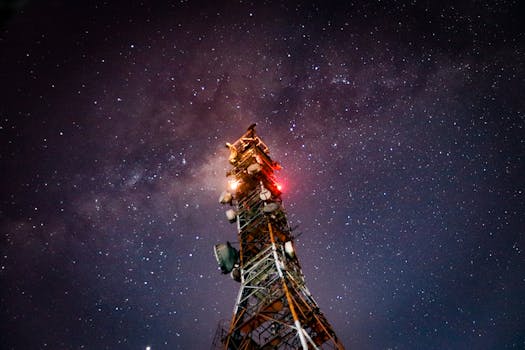MEO Satellites: Revolutionizing Global Communication with Medium Earth Orbit Technology

MEO Satellites: Revolutionizing Global Communication with Medium Earth Orbit Technology
Medium Earth Orbit (MEO) satellites are a type of satellite that operates in an orbital altitude of approximately 2,000 to 36,000 kilometers above the Earth’s surface. This range is higher than Low Earth Orbit (LEO) satellites but lower than Geostationary Orbit (GEO) satellites. MEO satellites have gained significant attention in recent years due to their unique characteristics, which make them an attractive option for various applications, including global communication, navigation, and Earth observation.
The main advantage of MEO satellites is their ability to provide faster and more reliable connections compared to traditional GEO satellites. Since MEO satellites are closer to the Earth’s surface, they experience less signal delay, which is a critical factor in real-time communication applications. Additionally, MEO satellites have a wider field of view, allowing them to cover larger areas and provide more comprehensive coverage.
History and Development of MEO Satellites
The concept of MEO satellites dates back to the 1960s, when the United States and the Soviet Union began exploring the possibilities of using satellites in medium Earth orbit for various purposes, including communication, navigation, and military applications. However, it wasn’t until the 1990s that the first commercial MEO satellite systems were launched, providing navigation and communication services.
One of the most notable examples of MEO satellite systems is the Global Positioning System (GPS), which was launched by the United States Department of Defense in the 1970s. GPS uses a constellation of MEO satellites to provide location information and timing signals to GPS receivers on the ground. The success of GPS has led to the development of other MEO satellite systems, including the European Union’s Galileo and Russia’s GLONASS.
Applications of MEO Satellites
MEO satellites have a wide range of applications, including:
Global communication: MEO satellites can provide high-speed internet access, voice communication, and data transmission services to remote and underserved areas. They are particularly useful for areas where traditional communication infrastructure is lacking or unreliable.
Navigation: As mentioned earlier, MEO satellites are used in navigation systems such as GPS, Galileo, and GLONASS. These systems provide location information and timing signals to GPS receivers, enabling a wide range of applications, including aviation, maritime, and land transportation.
Earth observation: MEO satellites can be used for Earth observation applications, such as monitoring weather patterns, tracking climate change, and detecting natural disasters. They can provide high-resolution images and data, which can be used for various purposes, including environmental monitoring, agriculture, and urban planning.
Benefits and Challenges of MEO Satellites
MEO satellites offer several benefits, including:
Faster and more reliable connections: MEO satellites experience less signal delay compared to GEO satellites, making them suitable for real-time communication applications.
Wider field of view: MEO satellites have a wider field of view, allowing them to cover larger areas and provide more comprehensive coverage.
Lower latency: MEO satellites have lower latency compared to GEO satellites, making them suitable for applications that require fast and responsive communication.
However, MEO satellites also face several challenges, including:
Interference: MEO satellites can experience interference from other satellites and terrestrial systems, which can affect their performance and availability.
Orbit maintenance: MEO satellites require regular orbit maintenance to ensure they remain in their designated orbit and continue to provide services.
Cost: MEO satellites are more expensive to launch and maintain compared to LEO satellites, which can make them less attractive for some applications.
Conclusion
In conclusion, MEO satellites are revolutionizing the way we communicate globally, offering faster and more reliable connections than traditional GEO satellites. Their unique characteristics, including their ability to provide wider coverage and lower latency, make them an attractive option for various applications, including global communication, navigation, and Earth observation. While MEO satellites face several challenges, their benefits make them a vital component of modern satellite technology. As the demand for global connectivity and real-time communication continues to grow, the importance of MEO satellites will only continue to increase.

